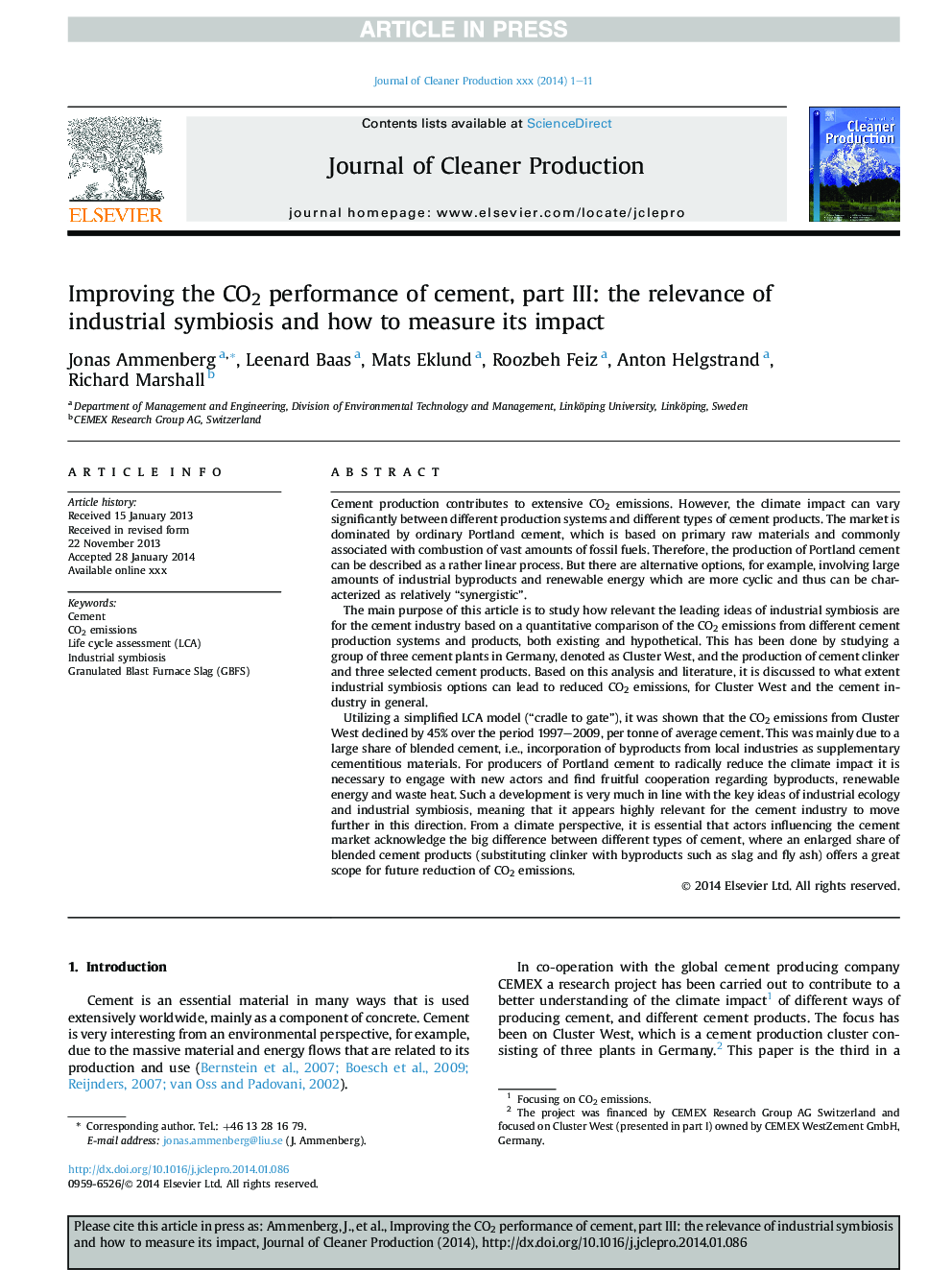| کد مقاله | کد نشریه | سال انتشار | مقاله انگلیسی | نسخه تمام متن |
|---|---|---|---|---|
| 8104243 | 1522148 | 2015 | 11 صفحه PDF | دانلود رایگان |
عنوان انگلیسی مقاله ISI
Improving the CO2 performance of cement, part III: the relevance of industrial symbiosis and how to measure its impact
دانلود مقاله + سفارش ترجمه
دانلود مقاله ISI انگلیسی
رایگان برای ایرانیان
کلمات کلیدی
موضوعات مرتبط
مهندسی و علوم پایه
مهندسی انرژی
انرژی های تجدید پذیر، توسعه پایدار و محیط زیست
پیش نمایش صفحه اول مقاله

چکیده انگلیسی
Utilizing a simplified LCA model (“cradle to gate”), it was shown that the CO2 emissions from Cluster West declined by 45% over the period 1997-2009, per tonne of average cement. This was mainly due to a large share of blended cement, i.e., incorporation of byproducts from local industries as supplementary cementitious materials. For producers of Portland cement to radically reduce the climate impact it is necessary to engage with new actors and find fruitful cooperation regarding byproducts, renewable energy and waste heat. Such a development is very much in line with the key ideas of industrial ecology and industrial symbiosis, meaning that it appears highly relevant for the cement industry to move further in this direction. From a climate perspective, it is essential that actors influencing the cement market acknowledge the big difference between different types of cement, where an enlarged share of blended cement products (substituting clinker with byproducts such as slag and fly ash) offers a great scope for future reduction of CO2 emissions.
ناشر
Database: Elsevier - ScienceDirect (ساینس دایرکت)
Journal: Journal of Cleaner Production - Volume 98, 1 July 2015, Pages 145-155
Journal: Journal of Cleaner Production - Volume 98, 1 July 2015, Pages 145-155
نویسندگان
Jonas Ammenberg, Leenard Baas, Mats Eklund, Roozbeh Feiz, Anton Helgstrand, Richard Marshall,